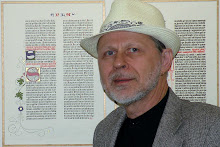Indexing and Search
It's been a while since I posted on this site. I've several others at the office that I use, so this one has been rather neglected of late. But lately I've been puzzling out some of the differences between an index and search, and specifically wondering how the user experience of a document can be improved through one or the other.
I'm an avid user of indexes in printed material, especially books. I've gone so far as to wonder why the Harry Potter books aren't indexed so that I can go find a reference from one book in another without re-reading the entire 660 pages.
Ah... now there's a clue. I want to find something, so I look in the index. In other words, when I'm dealing with paper documents, the index is my search tool. Now, if I could simply say to the book, "time to back out is now" and have the correct volume fall open to page 174, would I ever use the index?
I have to say that I would, but not for the same things. Instead of being a search tool, the index would focus on the other aspect of its being which is education. A well-formed index includes things like topics, sub-topics, see, and see also. By looking in an index I can find out what other things are related to the topic that I have thought of. In all likelihood, they will be things that I hadn't considered in my original search.
So, when we get to electronic documents where I have a good search tool, I believe that I still need a good index. The operative word in both topics is "good." By and large, neither search nor indexes in electronic documents are good. And they do not get better by giving me more references. When I search for "Vacation in Europe with a pre-teen," I don't want porn sites as part of my search results. I'd like fewer results that mean more. I'd like search results that educate me on other searches that I might conduct. In fact, I want a good index to this subject.
On the other hand, if I look at an electronic index for an electronic document, I don't need an alphabetical listing of every word that appears in the document. What I need is a grouping of subjects, cross-referenced with other subjects, that will guide me to correct phrasing of my question for optimum search results. In fact, I want a good search engine.
So, do search and index have the same destiny when we are dealing with electronic documents? Or will one die as paper books and their navigation recede into the past for many of our students? I believe there must be a merging of the concepts that allows rapid location of specific information and education of related topics and limits the search results to relevant information. And I want it done automatically. Is that asking too much?
